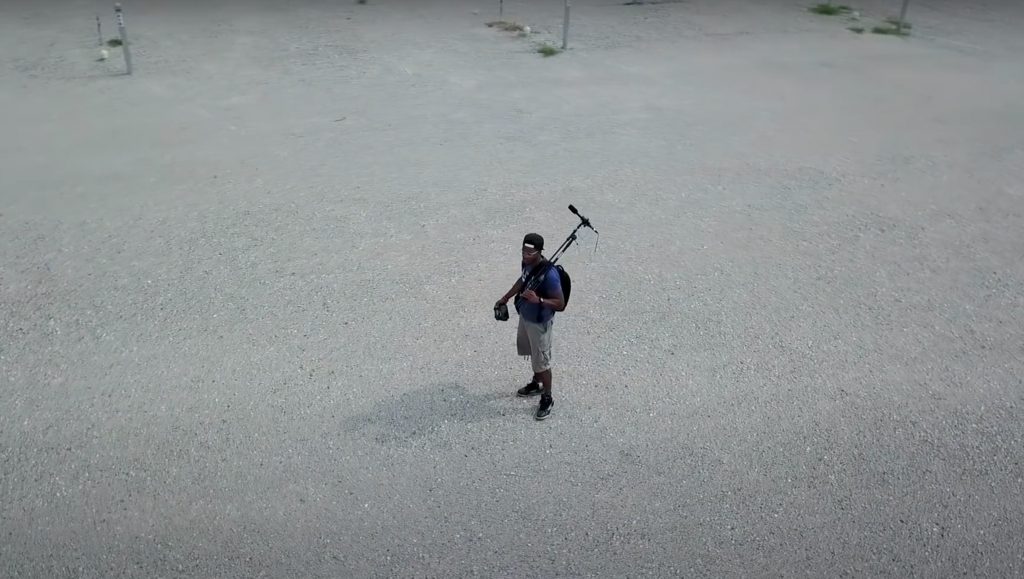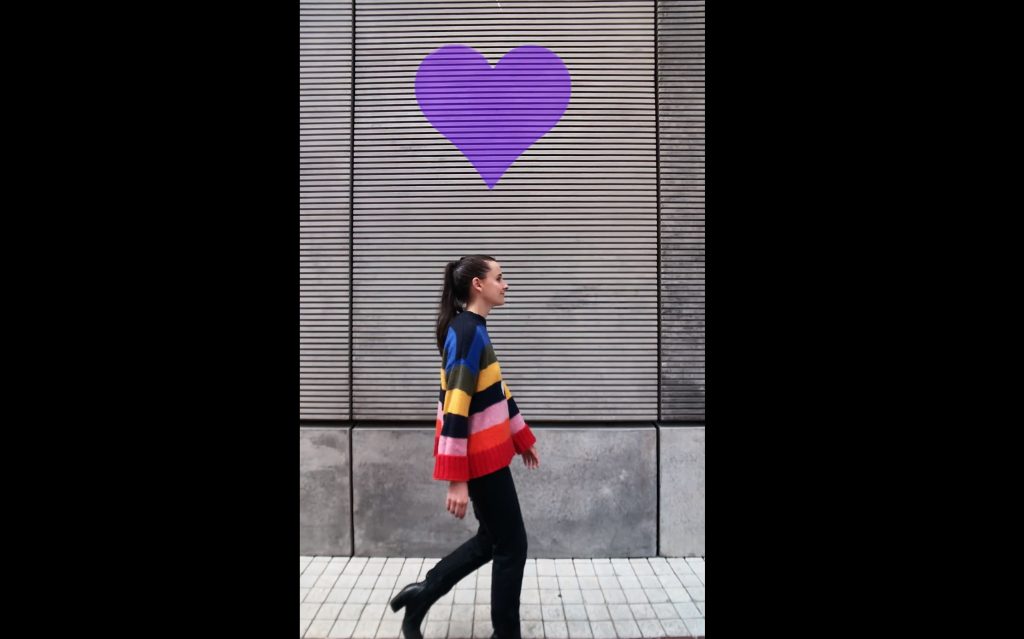There is a rare bright spot amidst the unrelentingly horrible Covid-19 news: the flowering of limited- location, short movies. Filmmakers around the world, working in many genres, have beendocumenting life during this pandemic. A memorable example is Sebastien Liebus’s “Unlockdown,” which took the top prize at the Corman Quarantine Film Festival. Liebus lives in a small village an hour from Paris. In an interview (below), he takes us behind the scenes of his retrofusion sci fi movie.
Interview with Sebastien Liebus
MobileMovieMaking: What made you want to become a filmmaker?
Liebus: It started when I was a kid, drinking too much of Spielberg and Cameron. But I was too busy with other projects to become a director. But at the beginning of the quarantine I was like, “Now I’ve got time, let’s do this.”
MobileMovieMaking: How did you develop your filmmaking skills?
Liebus: Watching every movie I could. I went to film school, but it was a lot about the history of cinema and analysis. We didn’t have the opportunity to shoot a movie. Very frustrating. And then last year, I started to use a anamorphic lens from Moment on my phone. The results were great so I knew I would start to shoot something with it.
MobileMovieMaking: Are there any filmmakers who influenced your approach?
Liebus: Many but especially Jean-Pierre Jeunet.
MobileMovieMaking: What gave you the idea for “Unlockdown”?
Liebus: It all came from my love for retrofuturism. This kind of science fiction features big consoles and big screens. The best example is the first “Alien” movie with all the sounds of Mother (the ship). The game “Alien Isolation” did a pretty good job of emulating that. In my head I started to grow a story about a scientist making experiments in his labs with a lot of old computers, trying to recreate an alternate reality. I started to search in my house and basement for an old machine. I found the VR set and some aluminum foil. In the beginning it was supposed to be a comedy. You can see some part of that, like the fake newspapers in the background with funny headlines. But when I started to shoot, I switched to a more serious tone.
MobileMovieMaking: Why did you decide to shoot the movie using a mobile device rather than a traditional camera?
Liebus: It was a very small space, like 10 meters square. I couldn’t move the walls. There’s one scene where the phone is right between me and the wall. Plus everything is more simple. You don’t have too much equipment to carry. But also, for me it was more than just a phone, I always saw it as a real camera. When I started to edit, some shots were so great that one of my friends—who shot a movie in the very same basement—was a little jealous. I did all of it without lights or a director of photography.
MobileMovieMaking: How did you plan “Unlockdown”?
Liebus: The first thing I did was storyboard. The scene with the newspaper on the ground, the marks on the wall—I knew exactly what I wanted to shoot and how. I wrote a very short synopsis, not really a script. And during shooting I was very close to my storyboards. The only plot point that I didn’t have when I started to shoot was why the experiment is a failure and why the machine is exploding. So everyday I was shooting without the main core of the movie.
MobileMovieMaking: That had to be scary.
Liebus: Well, finally I came up with the idea of the flowers, and the glitch when the flowers are growing in the real world.
MobileMovieMaking: What gear did you use?
Liebus: I used Samsung S9 with an anamorphic lens from Moment. It gives a very beautiful picture, very cinematic. On my phone, I used FiLMiC Pro with color grading. It really gives a very particular tone to the movie. They’re some shots I’m very proud of. When the guy is in front of the wall, like a shadow. I don’t know if I would have the same kind of image with a camera.
MobileMovieMaking: During the shooting, did you encounter any unexpected difficulty?
Liebus: The main problem was the light inside the basement. I only used the light coming from the sun, and there’s just one very small window. And everyday the sunlight was coming through the window like two or three hours a day. The rest of the time it was pitch black. So when I was shooting, I had to do it quickly. And every time I first had to install the set because there is a lot of moisture and it could damage the computers if I stayed too long. Also, I couldn’t see what I was shooting because I was the actor. So sometimes it took a lot of time to shoot the scene correctly. Also in some cases the idea I got for the storyboard didn’t work out. For example, you were supposed to see more shots of the marks on the wall. But it didn’t play in the editing. On the other hand, the competition limited entrants to only two minutes, and that helped me focus on what’s important in the story. It’s interesting to see the Director’s Cut I made after I finished the first editing for the Corman challenge. It runs for four minutes.
MobileMovieMaking: How did you create the props and visual effects?
Liebus: The most difficult part was to create the smoke at the end. I didn’t want digital smoke, because you always recognise it. So I tried to burn dry woods. When that didn’t work, I used an electrical kelt and it was perfect. The VR set is just an old VR set, I put some electric garlands inside. The counter you see is in fact a kitchen scale. The switch is from a generator for an electric fence. Finally I used an old phone connected to a shower pipe.
MobileMovieMaking: What about the sound?
Liebus: I was lucky to find great sounds on some free soundbanks, which I listed in the credits. But it took time to find the right ones. When I was editing, I didn’t like the movie at all. It was painful to watch because nothing was working. I didn’t know why. And then I started to work on the sound, creating the atmosphere, the sound of the generator, the sound of the computers. And then, the movie came to life. My favorite sounds are from the old computer.
MobileMovieMaking: Could you talk about your approach to editing the movie?
Liebus: This is my very first experience in filming and editing. It was very stressful. I did a lot of tests, cutting a lot. During editing, I realized I had to reshoot some parts because it was not working properly. But at the end I was very surprised by the results. The main story about the flower glitch was found in the editing room. I was working on HitFilm Express fom FX Home. They have tons of tutorials on Youtube, with a lot of free stuff you can reuse. I used one of their drone visions. Without those tutorials and resources, the film would be very different. I am very grateful to them.
MobileMovieMaking: What advice would you give to a beginning moviemaker?
Liebus: Watch movies and start making ones. You can do it. We have the technology. Twenty years ago, making a real movie was like impossible. It was hard to get a professional camera. Now, you have a smartphone in your pocket and can shoot in 4K. What are you waiting for?
MobileMovieMaking: What’s the best way for people to find out more about your work?
Liebus: I just started my Youtube channel where you can find the two versions of “Unlockdown.”
MobileMovieMaking: What’s up next?
Liebus: I’m starting another short movie this summer, some kind of a horror movie but with a ping pong ball against a killer robot. It’s gonna be fun.
MobileMovieMaking: Anything else?
Liebus: I still can’t believe I have won the Corman challenge. I have seen many great shorts in the competition. My favorite is “Angela.” Very dark! I hope that film and mine will give someone the strength to pick up a camera.
# # #
The editors of MobileMovieMaking have chosen “Unlockdown” as the Mobile Movie of the Week.
Links to Amazon represent an affiliate relationship. If you purchase anything after clicking one of those links, MobileMovieMaking will receive a fee, but your purchase price will be the same as if you had gone directly to Amazon.



 Previous post
Previous post
 Next post
Next post





